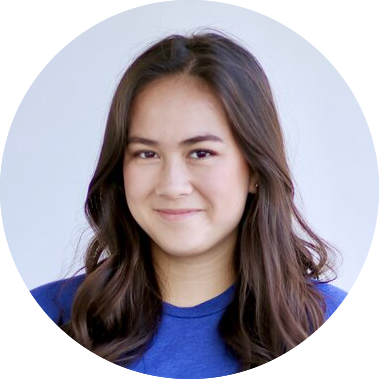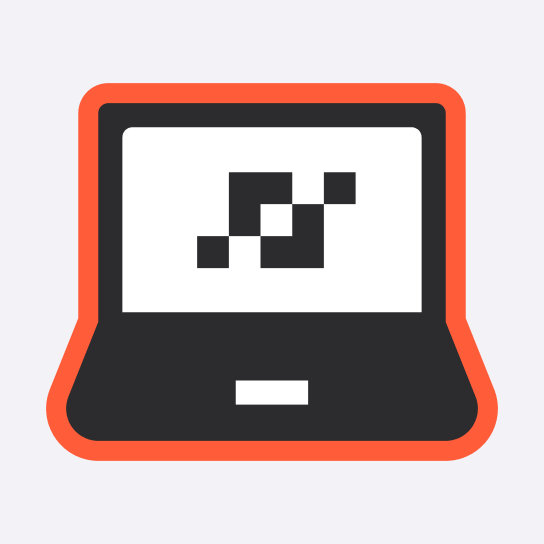
Designer | Spring'19
All designer journeys are different: some begin in high school, others begin at 30. Yet, what's remains consistent is the inspiration and zeal for designing impactful solutions. It is never too late to turn our passion for design into a career, especially at a time when resources and communities are right at our fingertips.
In our introductory lesson to design entrepreneurship, we will be discussing with LavaLab alumni Alyssa about her journey in design and how she transformed her passion into a career.
(Editor's Note: The following article has been edited and condensed.)

Thinking back, I really don’t remember the point when I felt that I had transitioned from “doing design” to “being a designer” because the line is quite blurred.
I started learning design my freshman year of college by taking a class in Adobe that taught the basics of Illustrator, Photoshop, and InDesign. Soon after, I joined a small student project and designed my first app using Photoshop. Looking back, that was the first time I started to understand that design was more than just making things "look pretty". Instead, it was about creating an experience for people through functional and simple designs.
Many people experience a similar euphoria when they start to see design as a means through which to achieve user satisfaction at the balance of aesthetics, accessibility, and function. We start understanding that design can influence target audience, ROI, branding, and more. When I started pairing research, strategy, and creativity, design became even more attractive to me, and I was eager to find ways to grow my expertise and learn more about what design can bring to various industries.
Initially, I learned software quickly by using a “fake it til you make it” attitude and full determination in finding opportunities. I once messaged over 200 people on LinkedIn in a single weekend when looking for an internship.
Luck is where preparation meets opportunity. - Randy Pausch (The Last Lecture)
When I was looking to gain more professional experience in design, I started reaching out to LA-based founders on LinkedIn who were looking for designers to kickstart their ideas. I soon landed an interview through a cold outreach, and shared some of the so-called “app designs” I worked on in my previous role. I was proud of what I was able to learn and create in such a short period of time, but finding the right mentorship and learning from professional experiences really elevates your skillset.
My interviewer asked a series of questions and at the end he asked “so do you know how to use Sketch?” and my smart-ass replied “yes, but my license expired so would you be able to get one for me?”
I had never opened Sketch before. If I’m being completely honest, I hadn’t even heard of it. However, I'm glad that I took the risk because I was fortunate enough to get the job and the license, and I immediately threw myself into Sketch for the entire weekend.
To be clear though, I’m not encouraging people to lie whatsoever, but understanding your strengths and embellishing without overpromising is very important. I knew my limits and bandwidth for learning software quickly, so this was a calculated risk I was willing to take, and I’m really glad that I took it.
Knowing how to put a number on your work is one of the hardest things. It’s a balance of understanding (a) what people are willing to pay for your designs and (b) how much more you can and should negotiate.
The best thing to do in these situations is be open and honest.
If a potential employer asks you how much you expect to be compensated, you can say “I actually haven’t been in a role similar to this one before, what did you have in mind?” Often, they will respond with some number they had in their head, since every hiring manager already has a budget allocated. Moreover, no one expects an answer right on the spot, so telling them that you will think about it and get back to them is 100% okay and encouraged! Make sure you talk to your parents, friends, mentors, or anyone who you think would know best about how to approach this important decision before signing, and ALWAYS read the whole contract to check for liabilities and contingencies.
In terms of figuring out your number, I would recommend asking someone you trust or experienced people in the industry how much they would charge for the role you are interested in. After you get your first position, then you can raise your expectations for every opportunity you get after.
Saying things such as “I was actually making x in my previous role, would you be able to match that?” and other tactics can help the other party gauge the level of compensation that you deserve, without sacrificing them rescinding the offer. Remember, you only get what you ask for!

You will get so many no’s before you get that one yes.
I know this is never what someone would like to hear, but it’s hard to stand out in a pool of applicants or LinkedIn connection requests. However, all of the work will be worth it when you find that role you love and that experience you so deserve.
Leverage the resources available to you.
If you are interviewing at a company, reach out to some former interns for advice and insight on the interview process. I rarely turn down a LinkedIn connection with a note asking to chat about my experience at a company, so leverage the people who know best!
You have to spend money to make money.
I know it’s quite a cliche, but it’s so true. If you have to pay for a portfolio site to remove the banner and attach a personal URL, or pay for LinkedIn premium to keep searching for that role you want, it is so worth it if it leads to an opportunity.
Get the most out of every opportunity.
While you are in a role, make sure to be open with your manager about the areas that you want to improve in and what projects that you would like to work on. Also, network with coworkers and mentors to learn more about different projects and parts of the company. Most importantly, stay in touch with people even after you leave the company, since you never know when you will need a job recommendation or even want to go back!
Overall, persistence, curiosity, and passion has driven my career to transition from dabbler to designer. From startups to tech giants, I have learned so much about design from every experience that I’ve had. My journey to design has still just begun, and yours can be right around the corner.
.png)